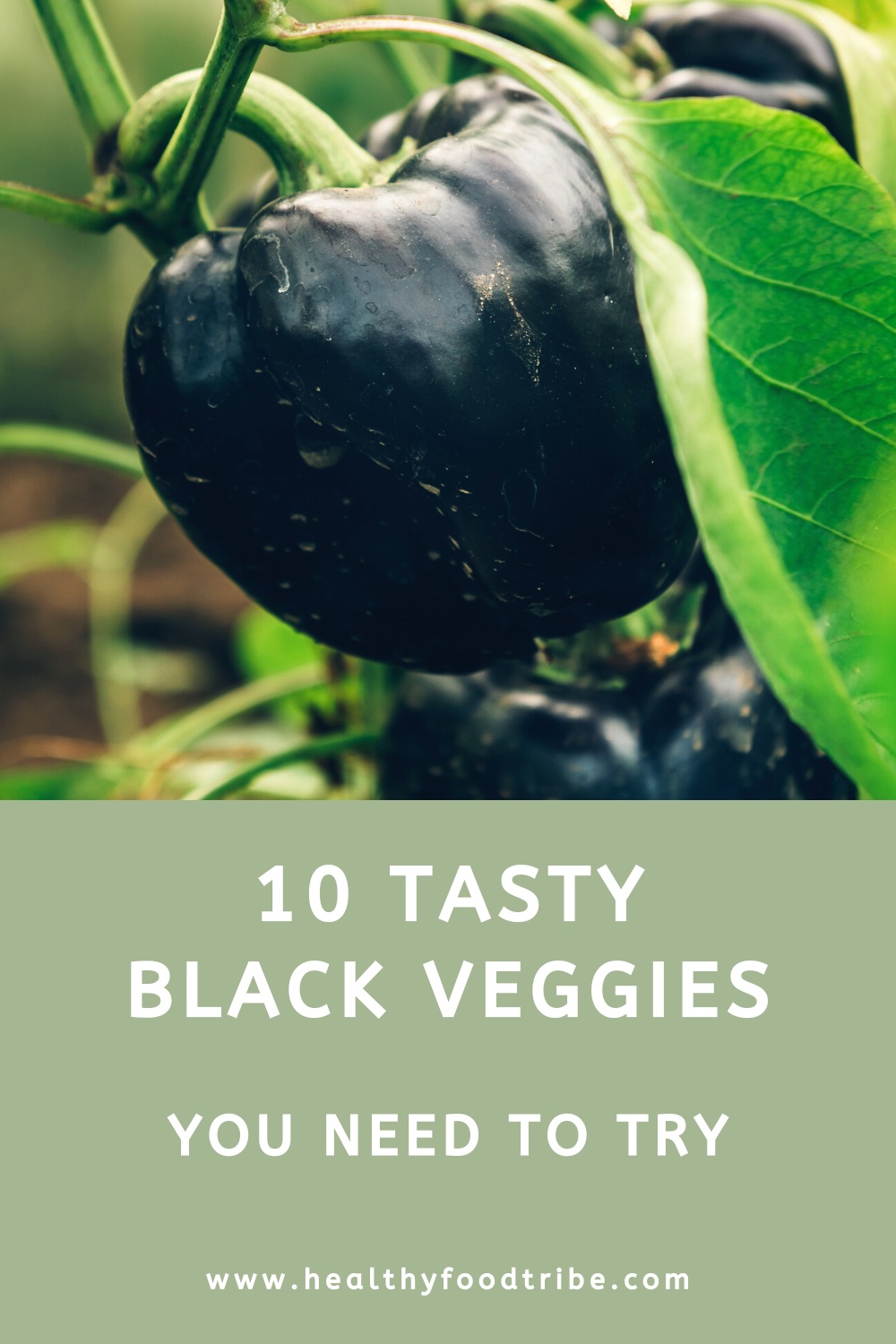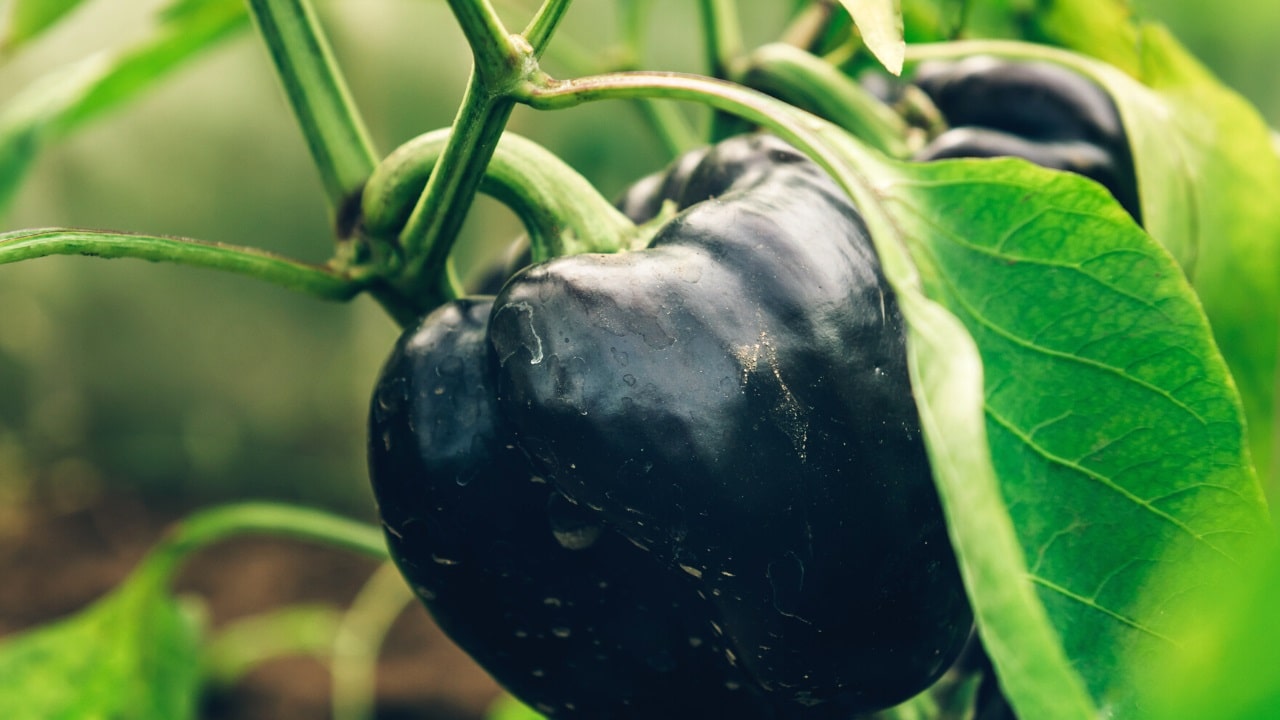Last updated: October 19, 2023
A list with ten delicious black veggies from around the world, each with unique shapes, flavors, and nutritional profiles.
Black vegetables occur when plants produce unnaturally high amounts of anthocyanins, water-soluble vacuolar pigments that can appear red, purple, blue, or black. This is also why blue vegetables, red vegetables, and purple fruits exist.
The strong presence of anthocyanin pigments is one reason why these types of veggies are fairly rare. In fact, most black produce that we eat today exists only due to selective breeding.
But that makes these dark-colored veggies no less beautiful or delicious. Keep reading, as I will share ten black vegetables that are worth hunting down.
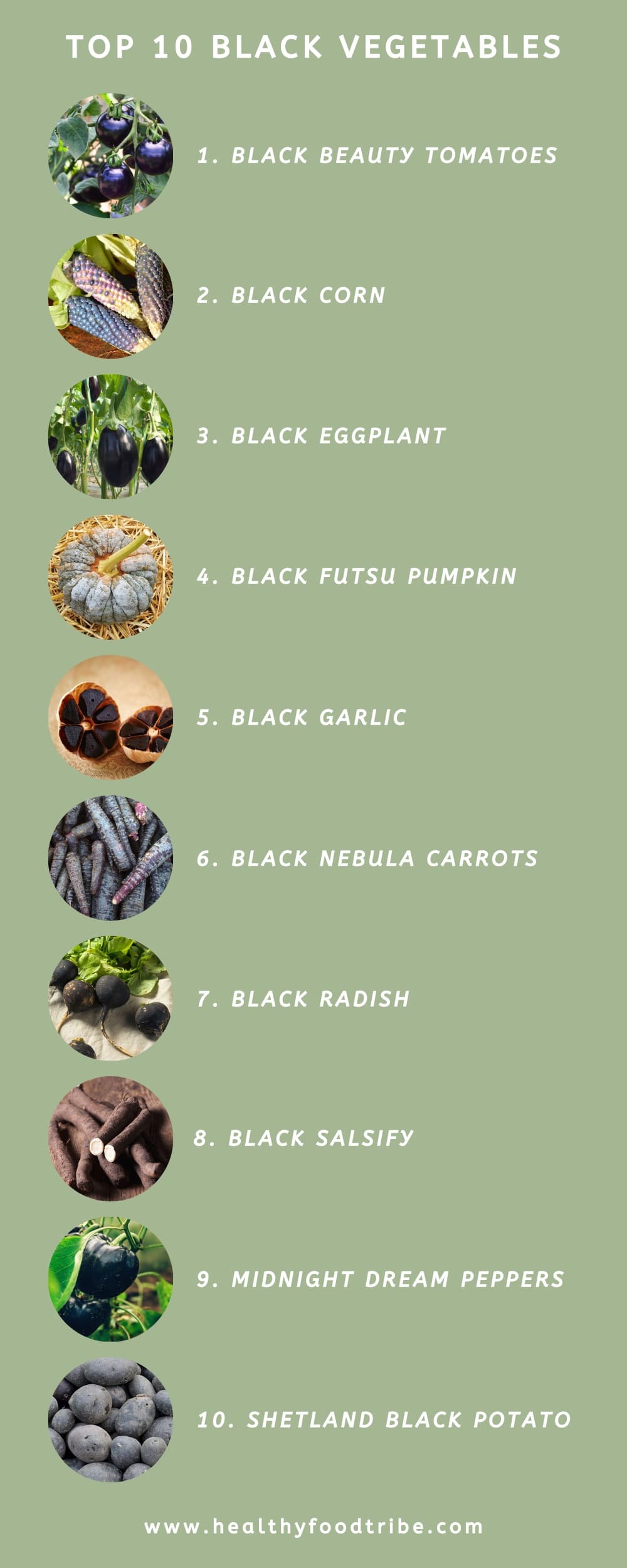
Top 10 Black Veggies
In alphabetical order, here are ten black veggies from around the world, including tips and info on their origins and how to find and eat them.
1. Black Beauty Tomatoes
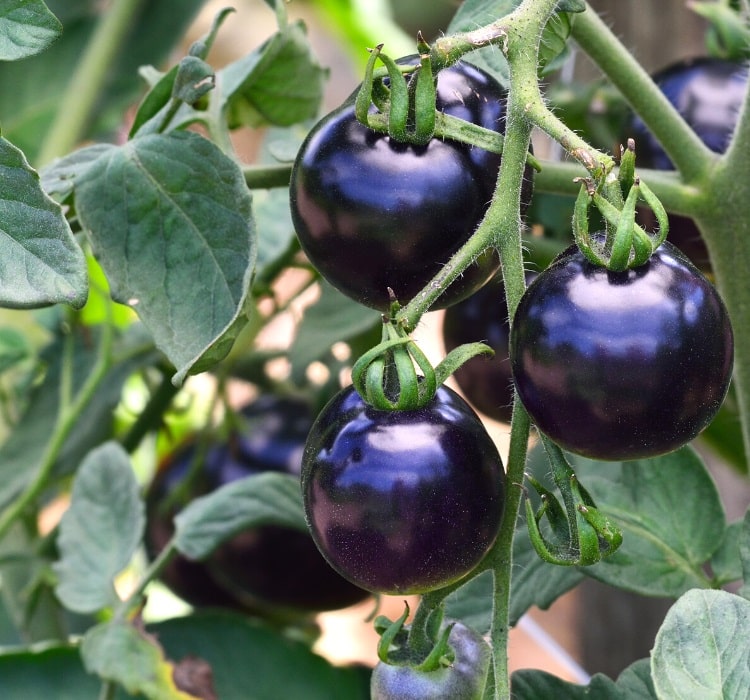
There are a lot of purple and black tomato cultivars out there, but none are darker than the Black Beauty. When exposed to full sun, these plump beefsteak-like tomatoes turn deep black. Skin deprived of sun will express a deep red or dark purple, which is only noticeable against the onyx of the rest of the fruit.
These gorgeous nightshades are fairly new, having been developed in 2012. They arose from a cross between Pink Berkeley Tie-Dye and Indigo Apple tomatoes. Underneath that black skin is red flesh and juicy red-green seeds. The flavor of Black Beauty tomatoes is rich and smooth, and a bit earthy. They make wonderful sandwich tomatoes and look gorgeous in salads.
Like other tomatoes, these are high in vitamins C, A, K, and B complex, manganese, and potassium, and their dark skin gives them an extra dose of antioxidants and flavonoids.
2. Black Corn
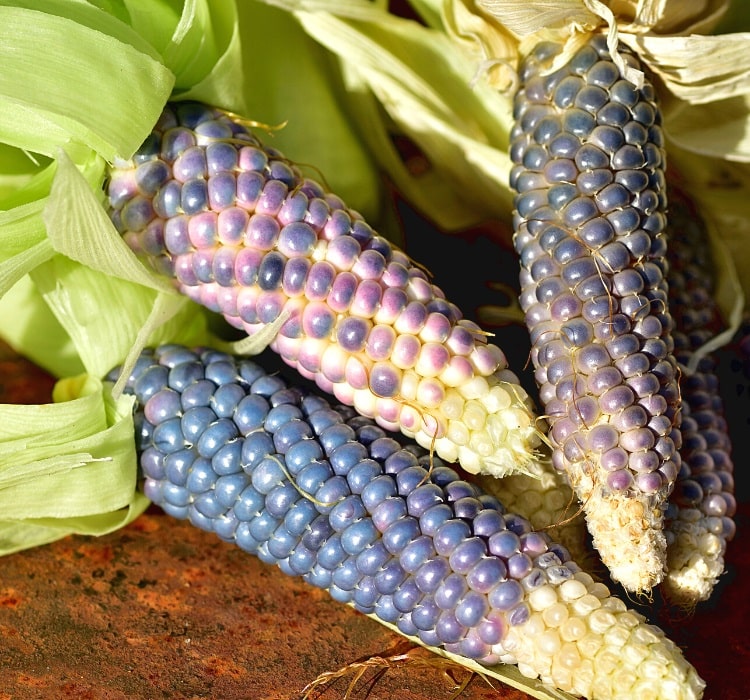
Like blue and red corn, black corn is an heirloom variety that humans have been growing since the time of the ancient Aztecs. The kernels on these long, slender cobs are jet-black when mature. The pigments in them are so pervasive that shucking black corn can dye your fingers purple.
This type of corn most likely originated in Peru. It is still commonly sold today at supermarkets throughout South America and Mexico. It is much harder to find stateside, but seeds are available from many heirloom seed providers.
Black corn is not as sweet as today’s yellow or white corn. It is chewy, starchy, and satisfying. Like other types of corn, it is perfect for grilling, roasting, and boiling. It can also be ground into flour to make black tortillas and cornbread.
Because the anthocyanin pigments exist in the skin and flesh, it has even more nutritional benefits than other veggies on this list. Besides antioxidants, it is also a good source of iron, thiamin, niacin, folate, and vitamin A.
3. Black Eggplant
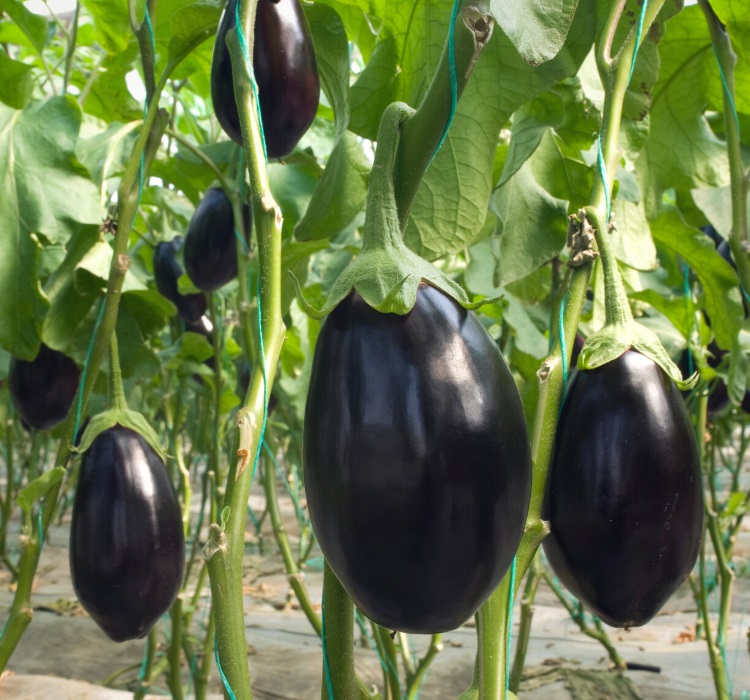
Eggplant, also known as aubergine, comes in various colors. The veggie gets its name from the small white cultivars that resemble eggs, but the purple varieties are more common today. Some of these purple types have such dark skin that they look black.
There are many black eggplant cultivars, but one of the most well-known is the Black Beauty eggplant. These large, bulbous eggplants have purple-black skin with white flesh. Their shape makes them a great choice for eggplant “burgers” and eggplant parmesan.
Like all eggplants, these ones have a mild flavor and a very spongy texture. They have a somewhat bitter taste when raw, but this mellows nicely when cooked. They tend to soak up the flavor of the sauces they are cooked in, which makes them versatile.
4. Black Futsu Pumpkin
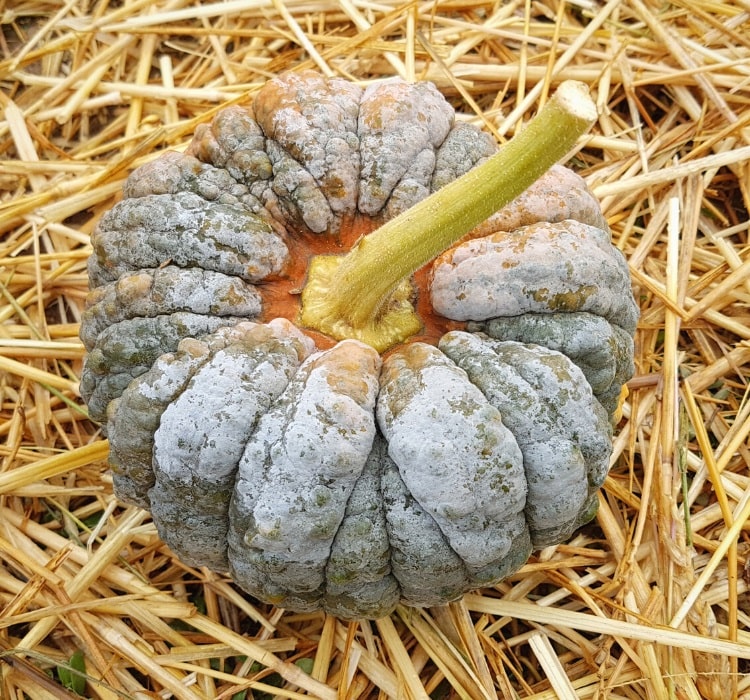
Futsu pumpkins are some of the most unique in the pumpkin patch. They have a classic pumpkin shape with bumpy to warty skin that makes them look a bit shriveled. Despite their name, they’re not really black.
There are various cultivars of this kind of pumpkin. The black varieties have a deep black-green color while growing. As they ripen, they take on a pale, dusty gray or blue hue. Some cultivars will ripen to dusty pink or orange. Black Futsu pumpkins are native to Japan. They are thought to have first been cultivars in the 16th century.
The flesh of Futsu is bright orange, just like a regular pumpkin. The taste is milder, though, with more chestnut flavor. They are great for baking with, roasting, or simply using as spooky decorations.
5. Black Garlic
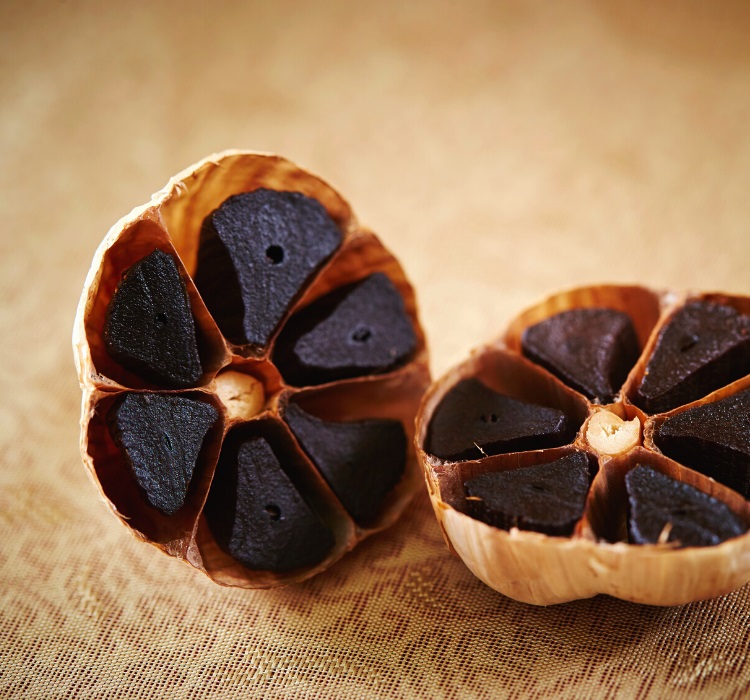
Black garlic is not a special cultivar of allium, but rather an aged version of regular garlic. Turning hard, milky-white garlic cloves into mushy, midnight black cloves takes time and the perfect conditions. But the product is well worth it.
Compared to regular garlic, black garlic is deeply savory, tangy, and sweet. The sugars in black garlic are enhanced during the aging process, giving it a flavor somewhat like caramelized onions in a balsamic reduction. The texture is smooth and soft to the point that these cloves can be spread over bread like butter.
Black garlic is often used as a flavoring agent for sauces and condiments. It can also be added as a delectable topping to savory dishes or even creatively mixed into desserts. The fermentation process black garlic undergoes, creates additional antioxidants.
6. Black Nebula Carrots
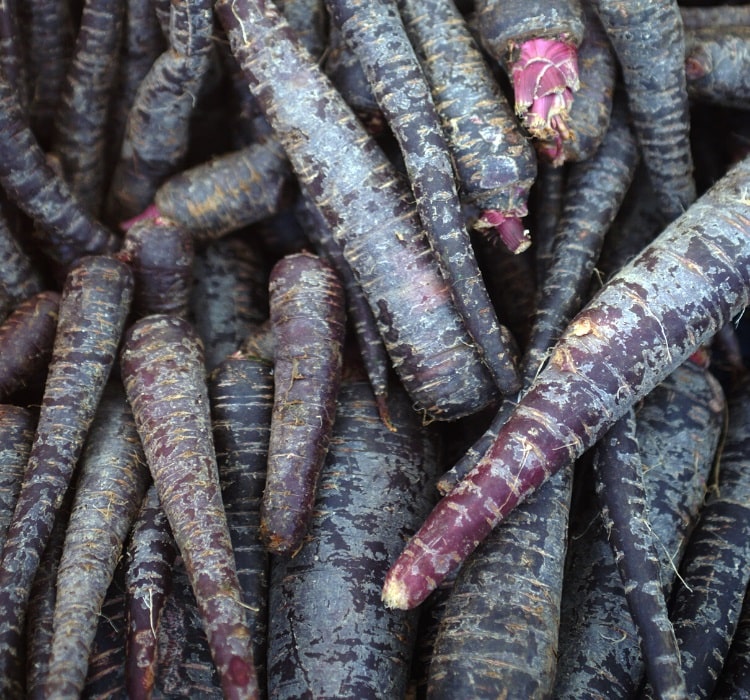
Colorful carrot options have become more popular with home gardeners and chefs. There are a number of “black” carrot cultivars, but most are more purple than black. The major exception to this is the black nebula carrot.
This heirloom carrot has deep black skin and dark purple flesh. When juiced, it produces a dark liquid similar to black currant juice. The pigment chemicals are so intense they can be used as natural dyes.
Black nebula carrots have a familiar flavor with extra notes of tangy-sweet wild berry. They retain their color after cooking and make a brilliant addition to any recipe that includes carrots, whether cooked or fresh.
These carrots first came to be in India, where the selection for dark roots eventually changed orange carrots to black.
7. Black Radish
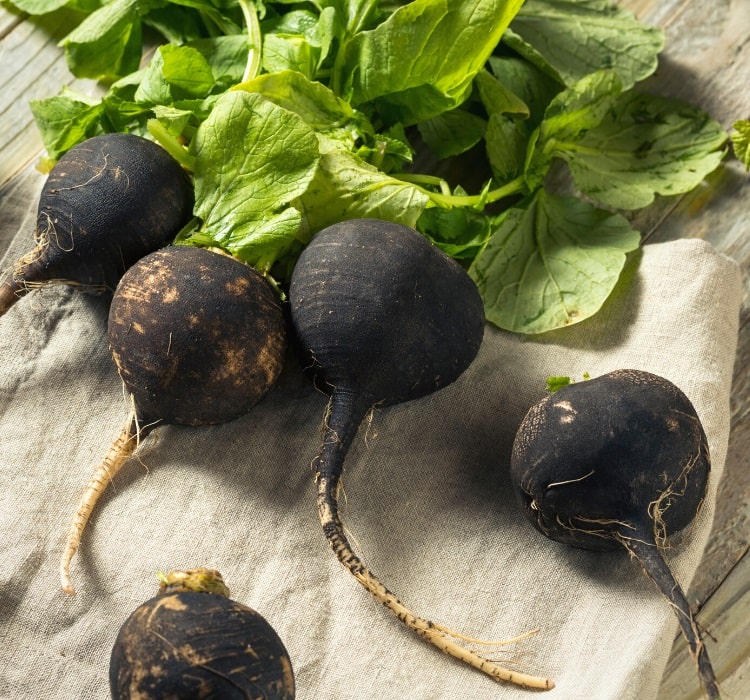
Black radishes are a variety of winter radish, also known as Black Spanish radish or Erfurter radish. Their skin is quite tough compared to spring radish varieties and has a distinct coal-black color. The flesh underneath is milky white. Some varieties have a traditional round taproot, while others have an elongated root.
The first mention of black radish was in Europe in the mid-1500s. By the end of the 20th century, it had been usurped in popularity by the tender spring radish. But the black radish is starting to make a comeback thanks to foodies and healthy eating influencers.
Black radishes have an earthy, spicy flavor with hints of horseradish. The taste is sharper than spring radishes but mellows nicely to sweet and peppery. They can be used in place of spring radishes in most recipes.
8. Black Salsify
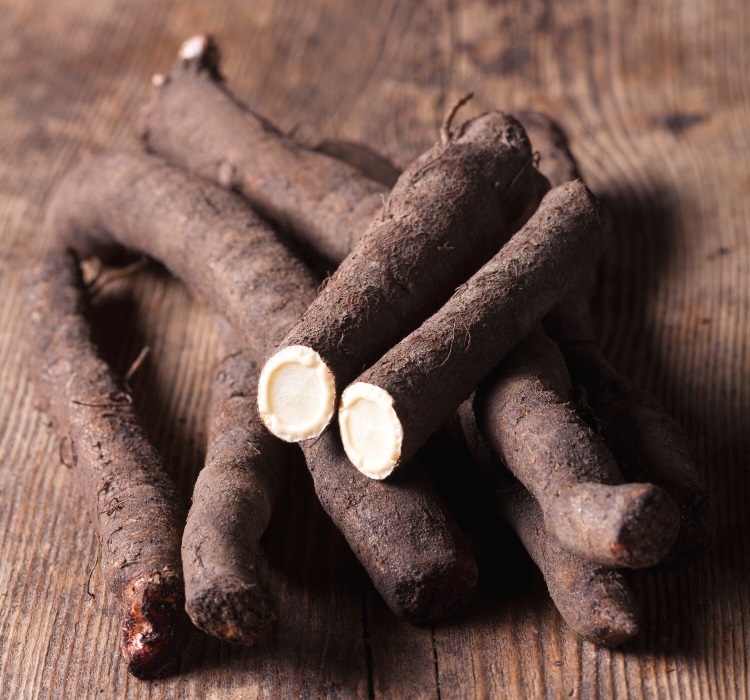
Black salsify is a close relative of the dandelion and is native to the Mediterranean. The large, elongated taproots of the plant have blackish-brown skin and white flesh. While not well known as a vegetable, locals consider these roots a delicacy.
The roots are peeled before eating and taste somewhat like oysters, hence the flower’s other common name, “oyster plant”. For vegetarians, you can liken the flavor to buttery artichoke.
The roots are usually cooked and used in dishes the same way potatoes or turnips would be. They are also quite delicious when boiled in salt water and served with a splash of lemon.
9. Midnight Dream Peppers
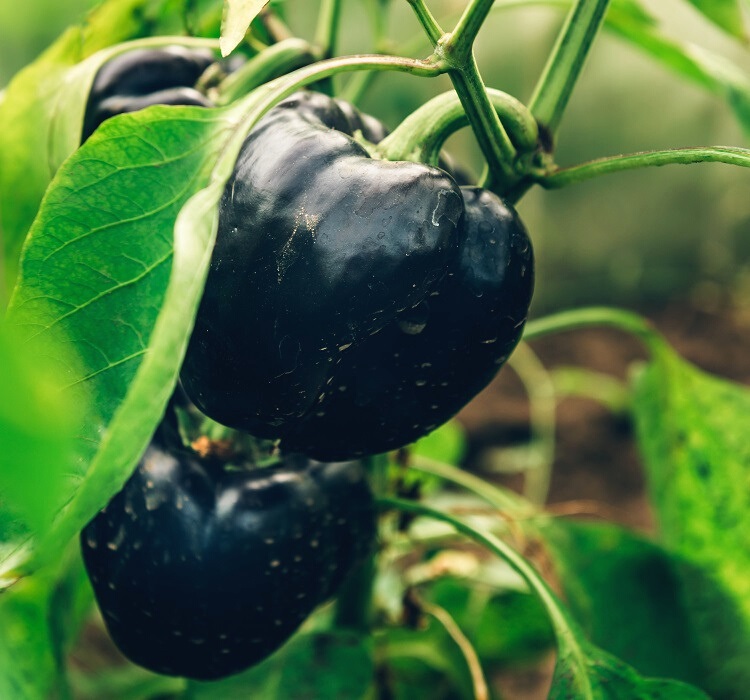
Most black pepper cultivars are more purple than anything. Midnight dream peppers, a type of four-lobed sweet pepper, are as close to true black as we’ve ever seen.
The thick skin of these bell-type peppers starts black with bright green flesh. If left on the plant, it will mature to red. The flavor and texture of these black peppers are similar to green bell peppers.
They are crisp and earthy when eaten raw and are also a good choice for sauteing or grilling. They are a great source of vitamins C, B6, K, A, and E.
10. Shetland Black Potato
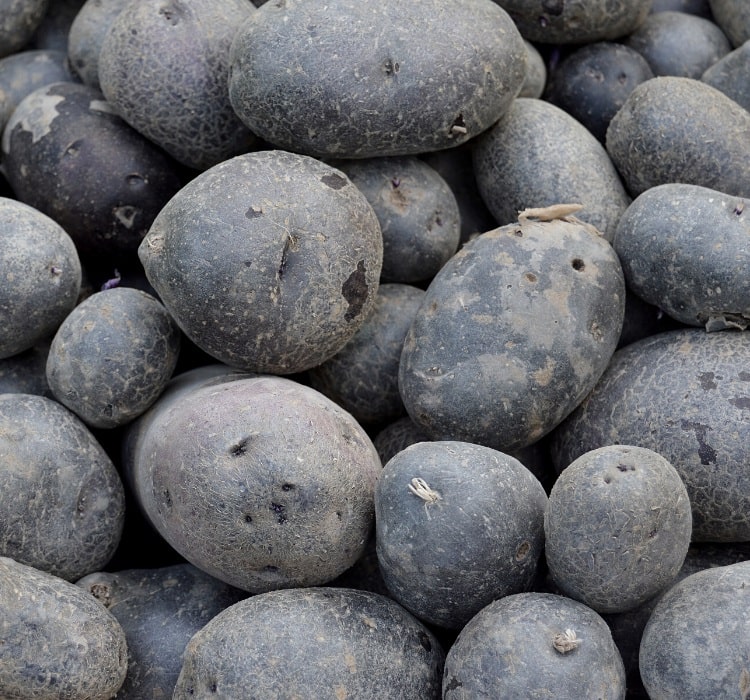
Shetland black potatoes are a heritage potato variety and have been around for at least a century. They hail from the Shetland Islands in the United Kingdom.
They are small to medium in size and often round or oblong. The dark skin is blackish-brown with purple undertones. The flesh is creamy white, much like a russet. Shetland black potatoes are great for sauteing, roasting, and boiling. They are especially well suited for absorbing sauces and gravy.
They have a light, floury texture and mild flavor with notes of sweet earthiness. To maintain their airy texture, it’s best to cook them with the black skin intact. But this skin is thicker than most potatoes and is usually discarded before eating.
